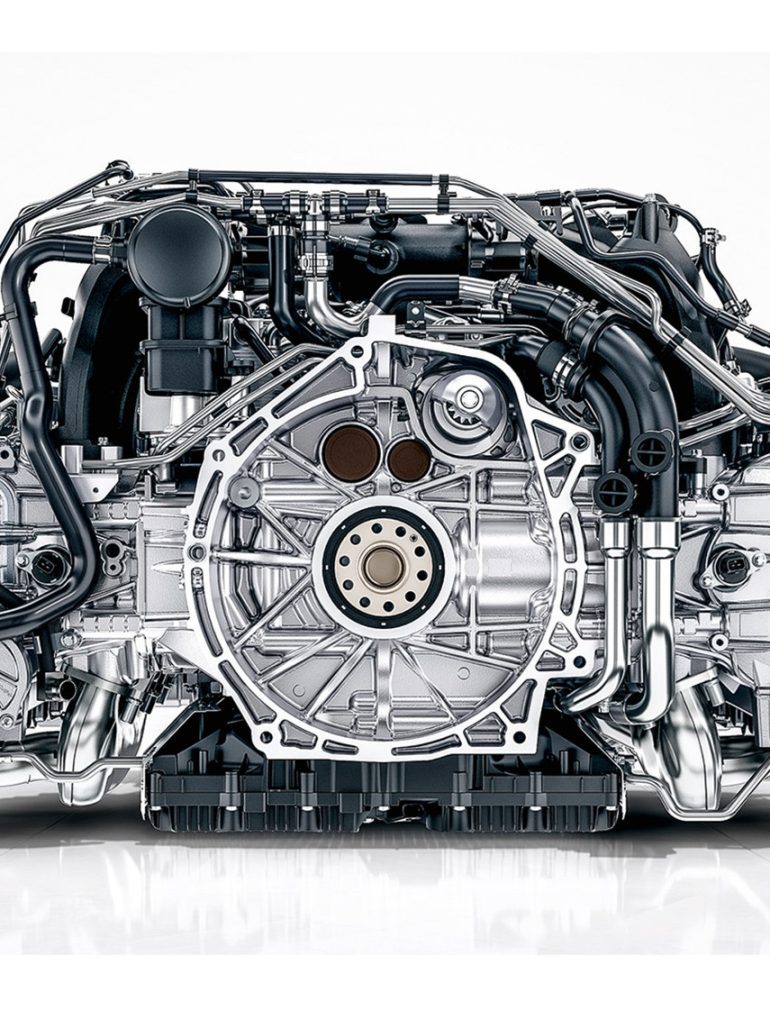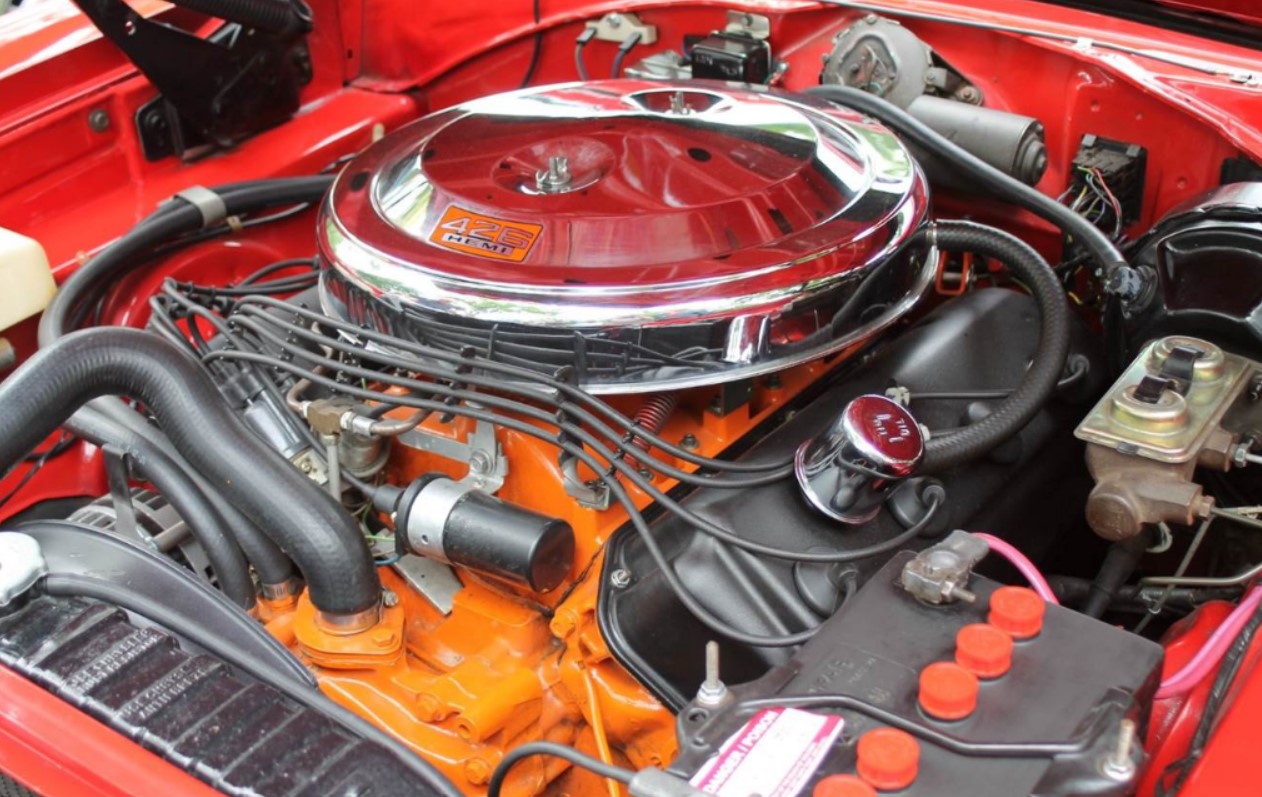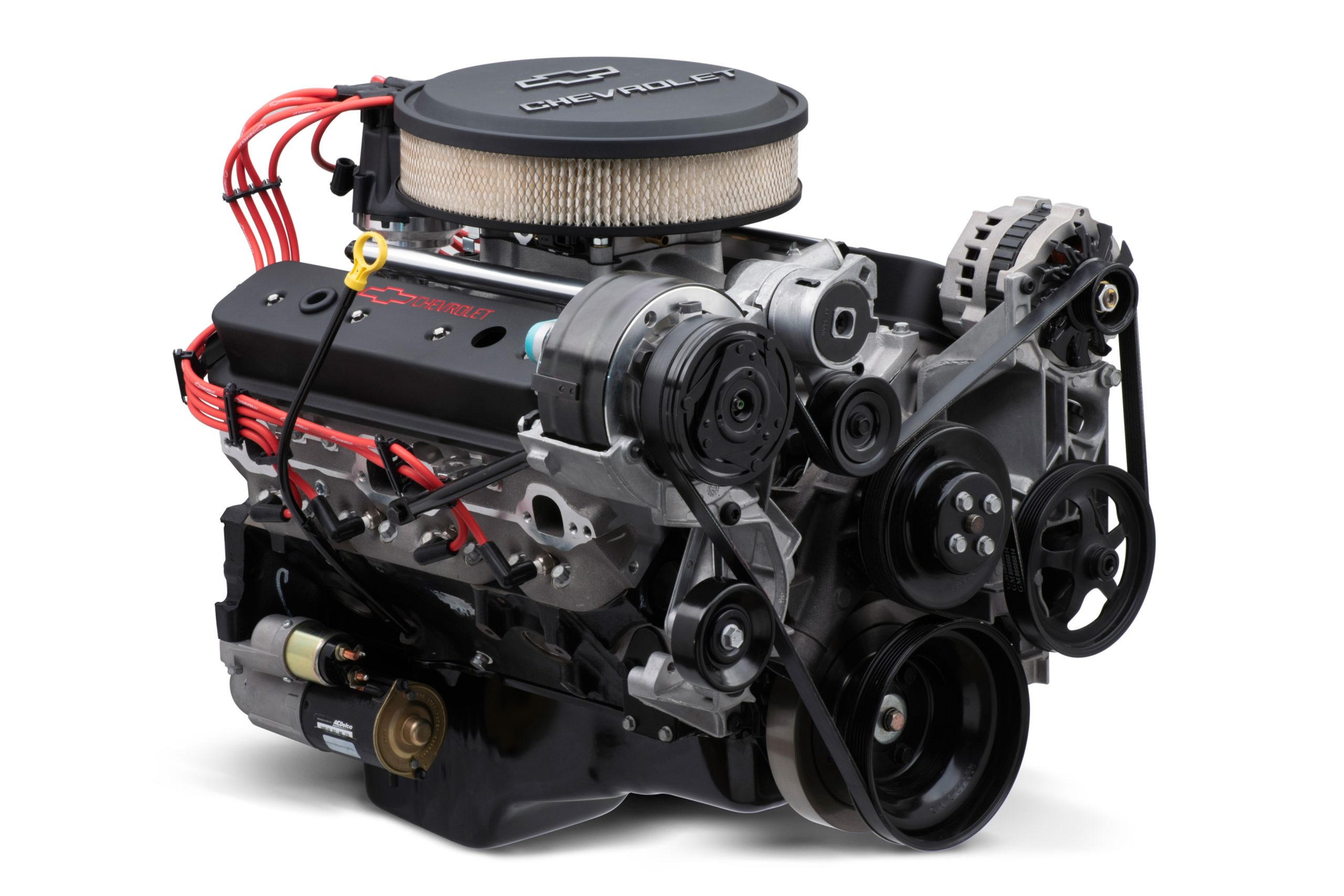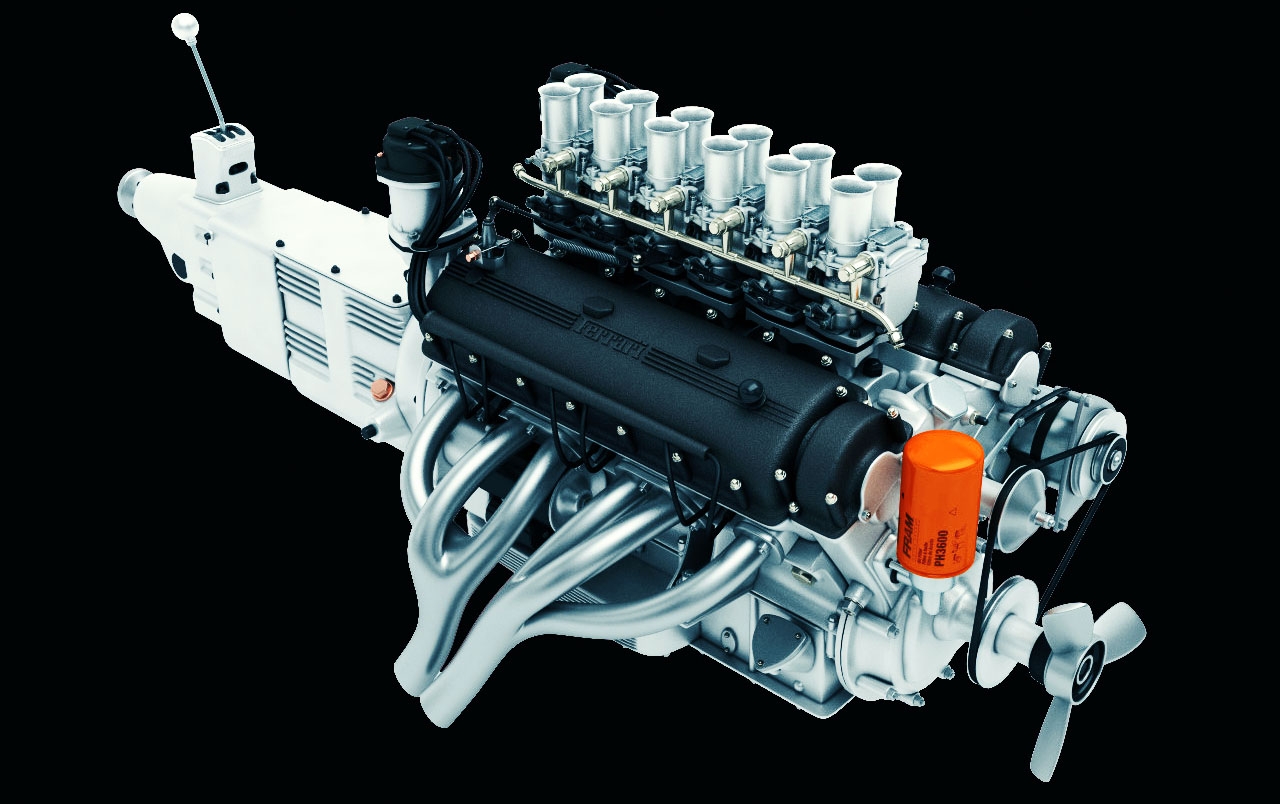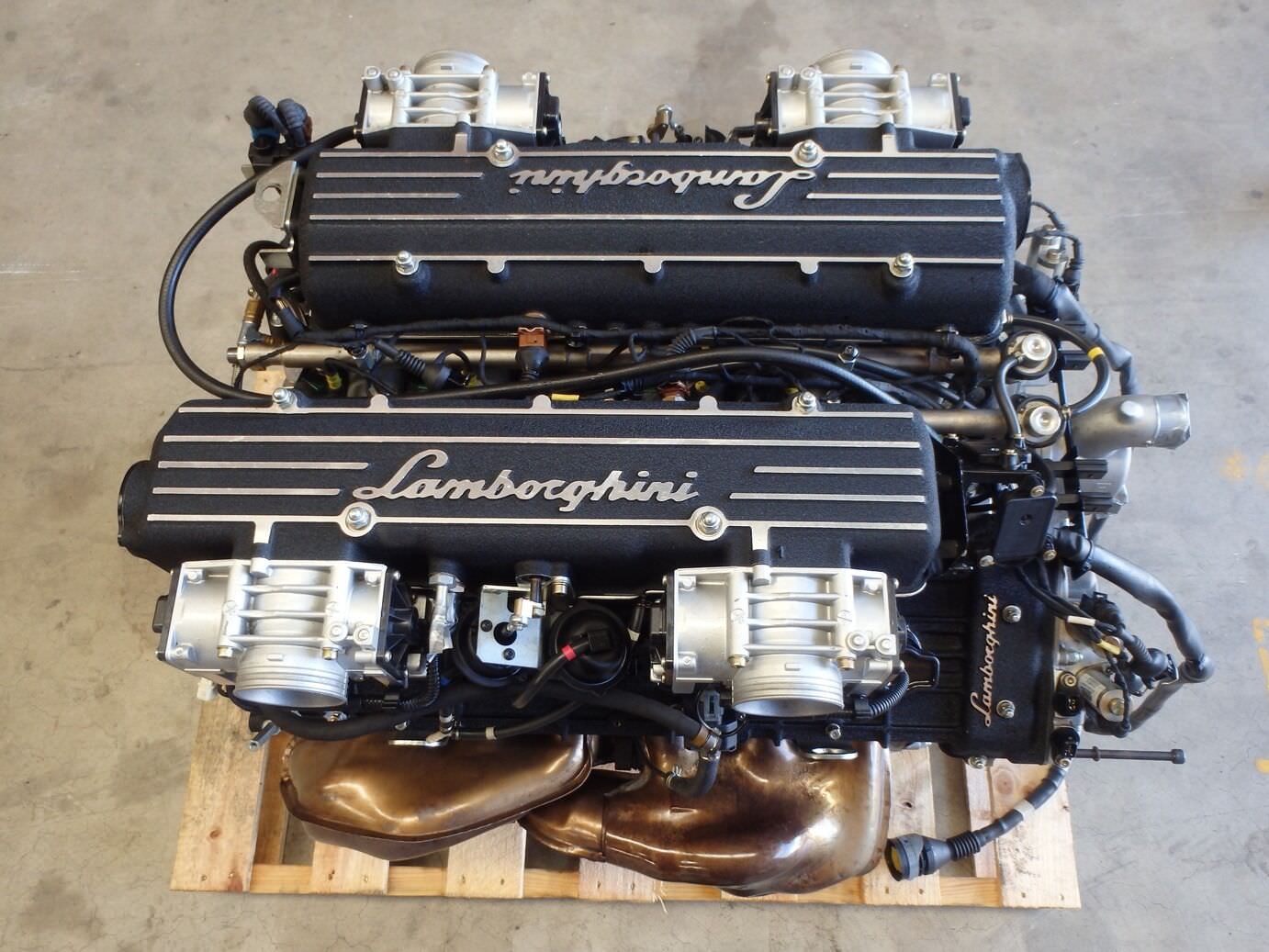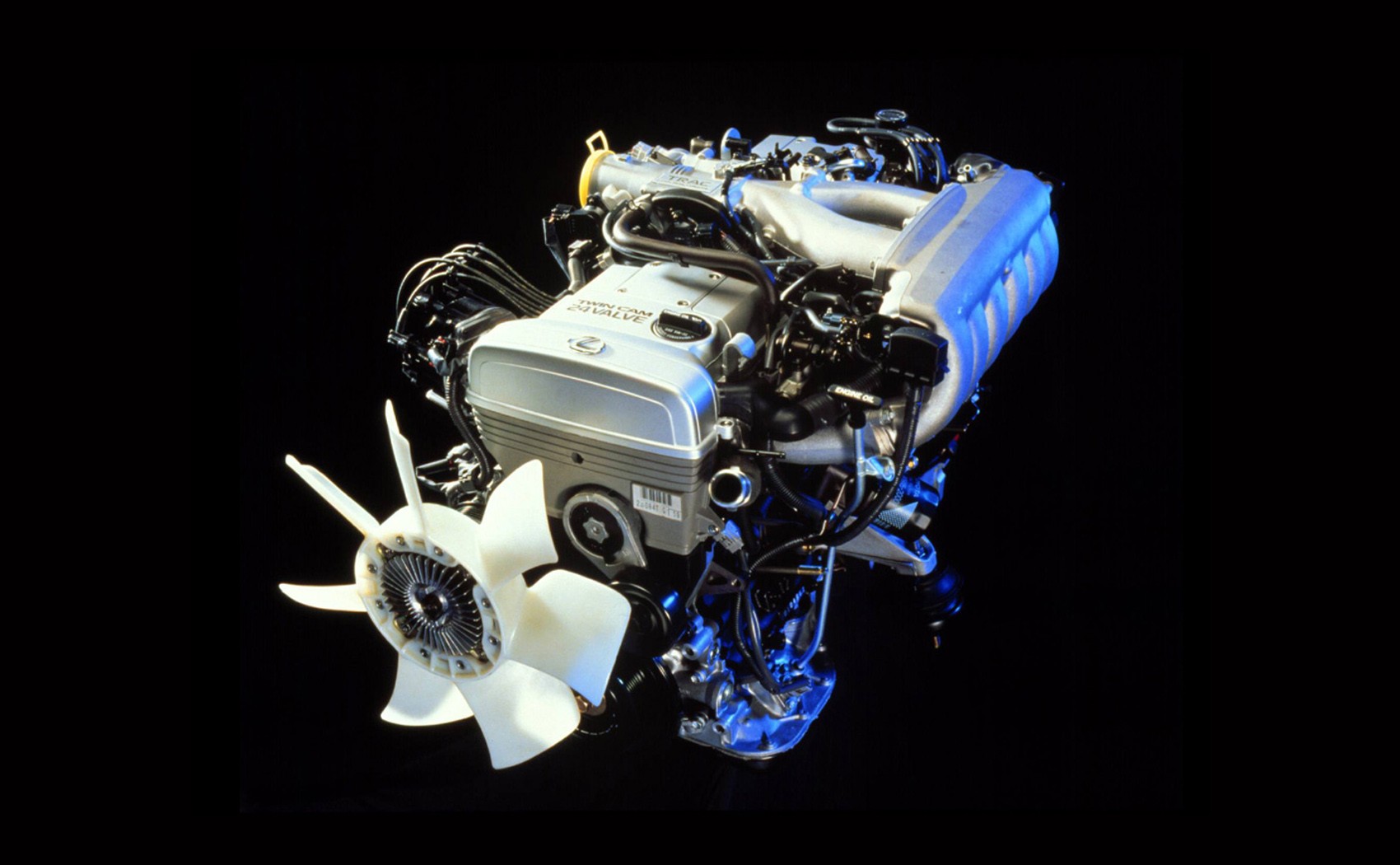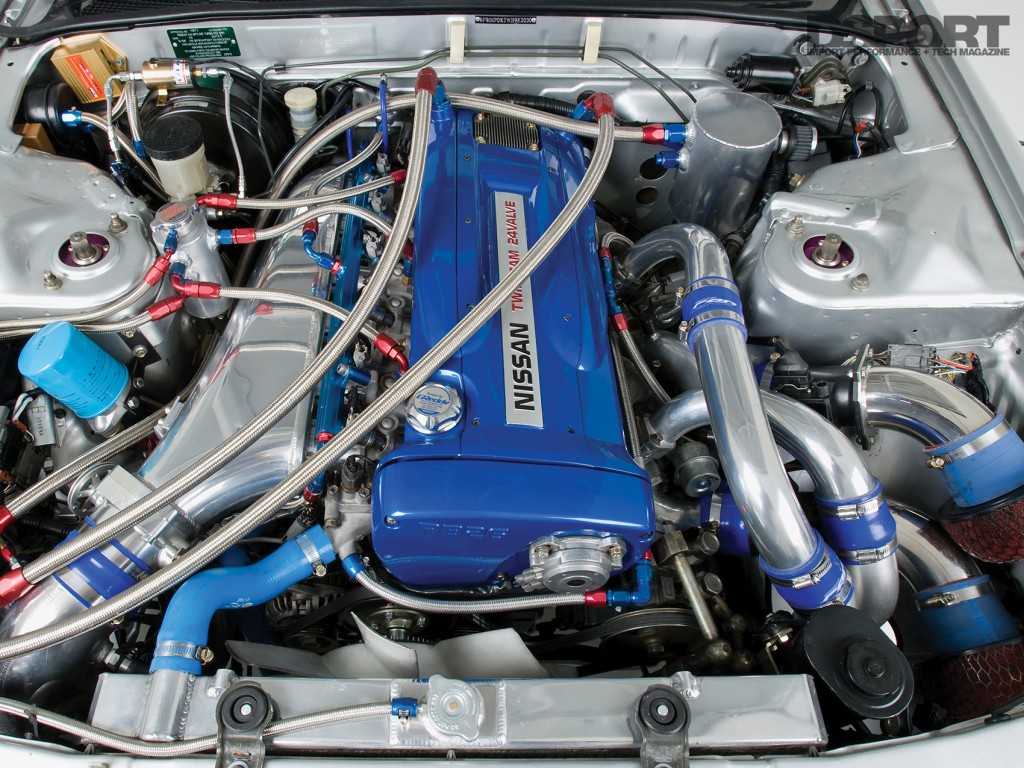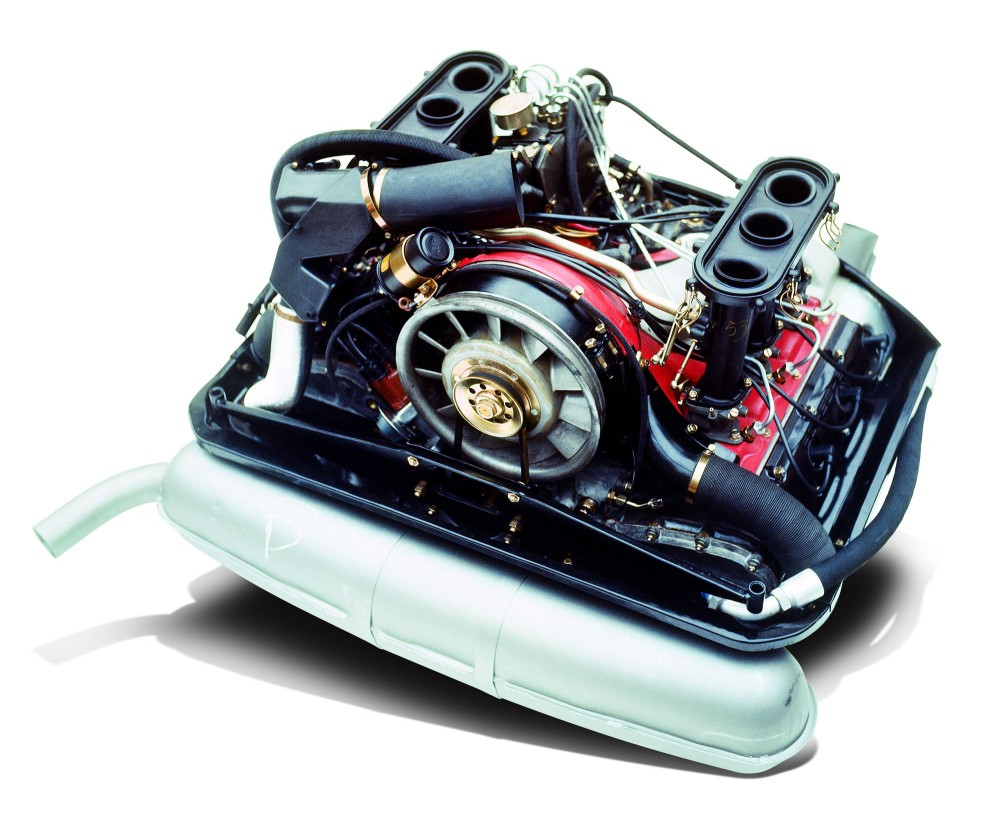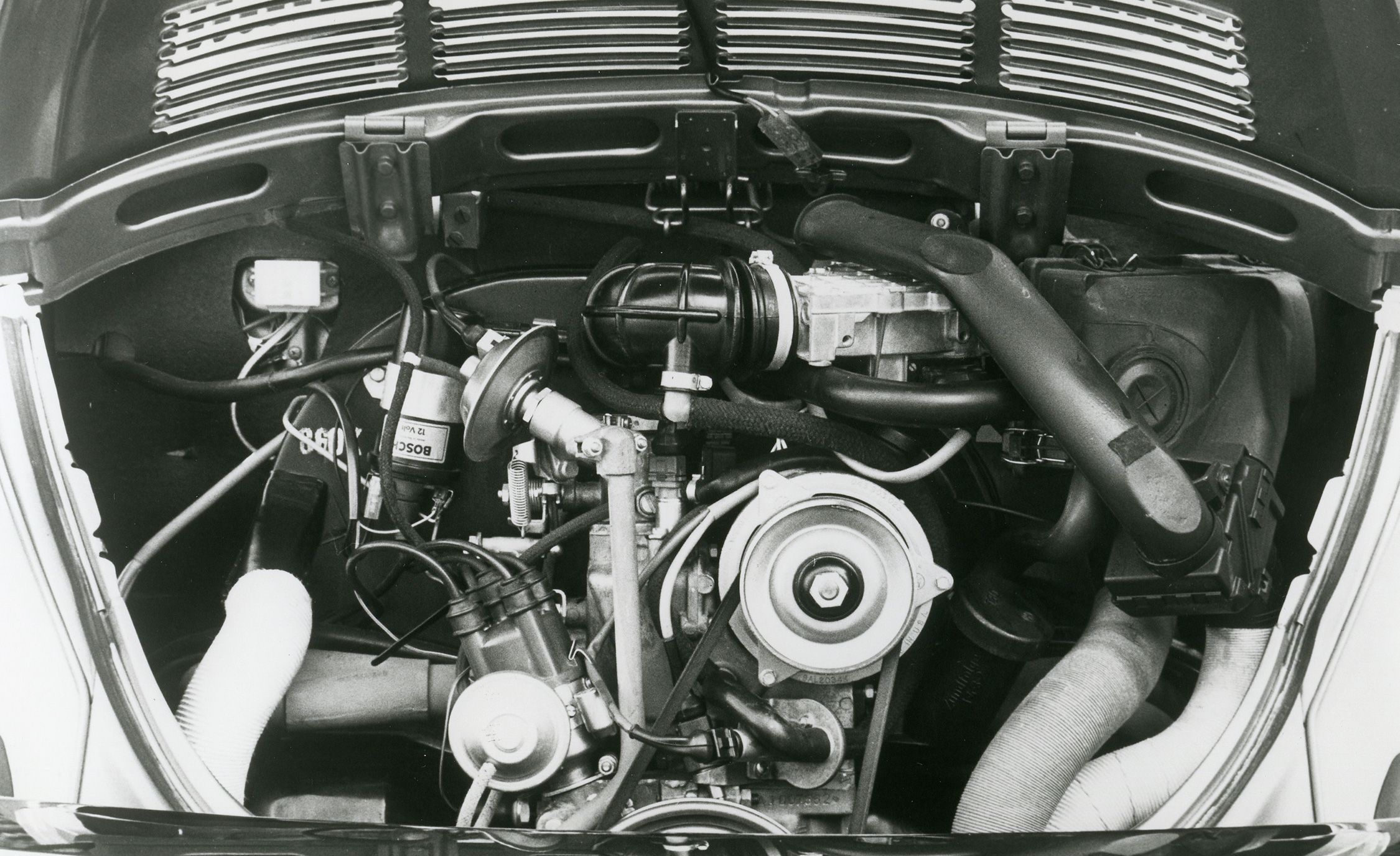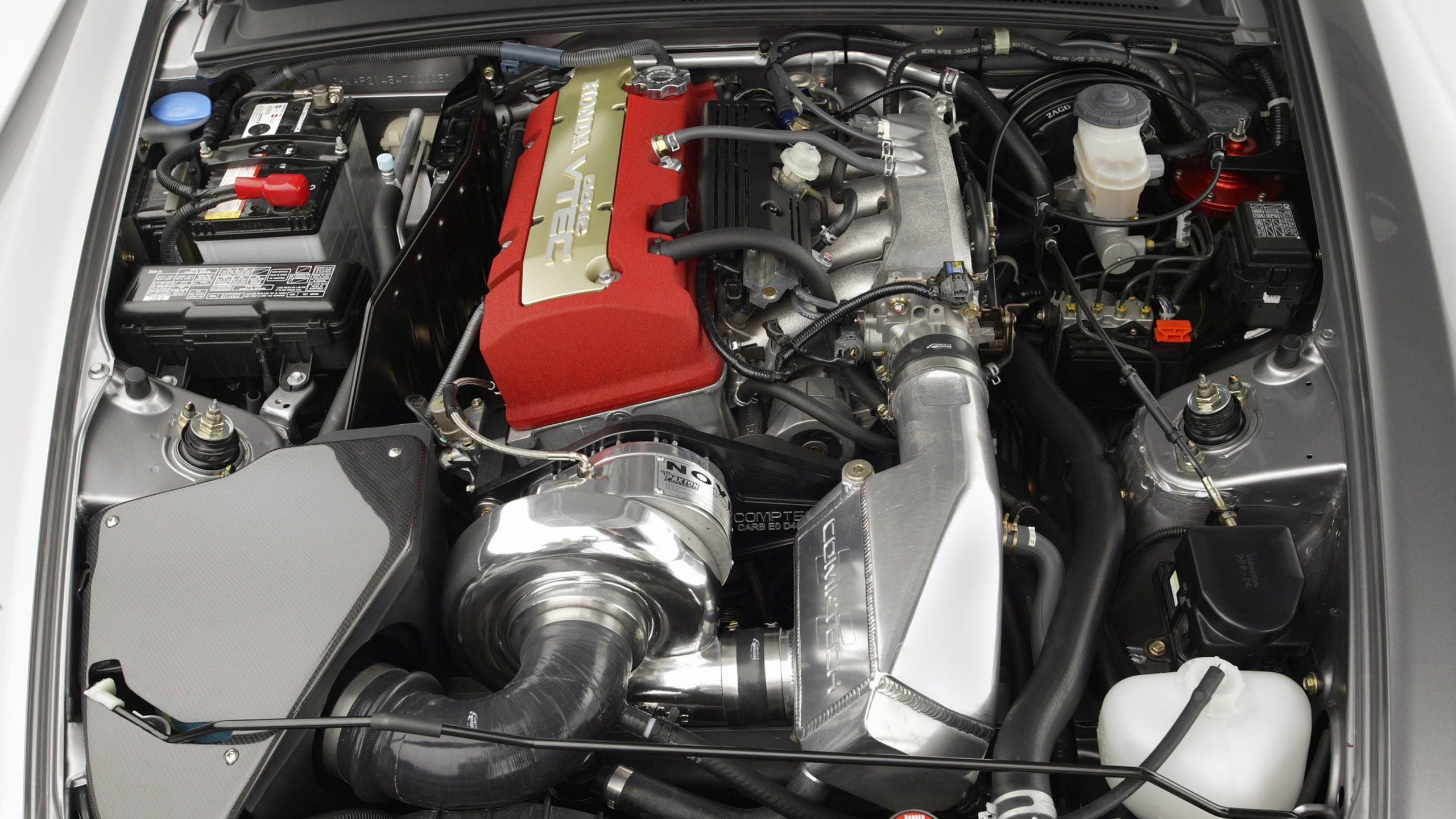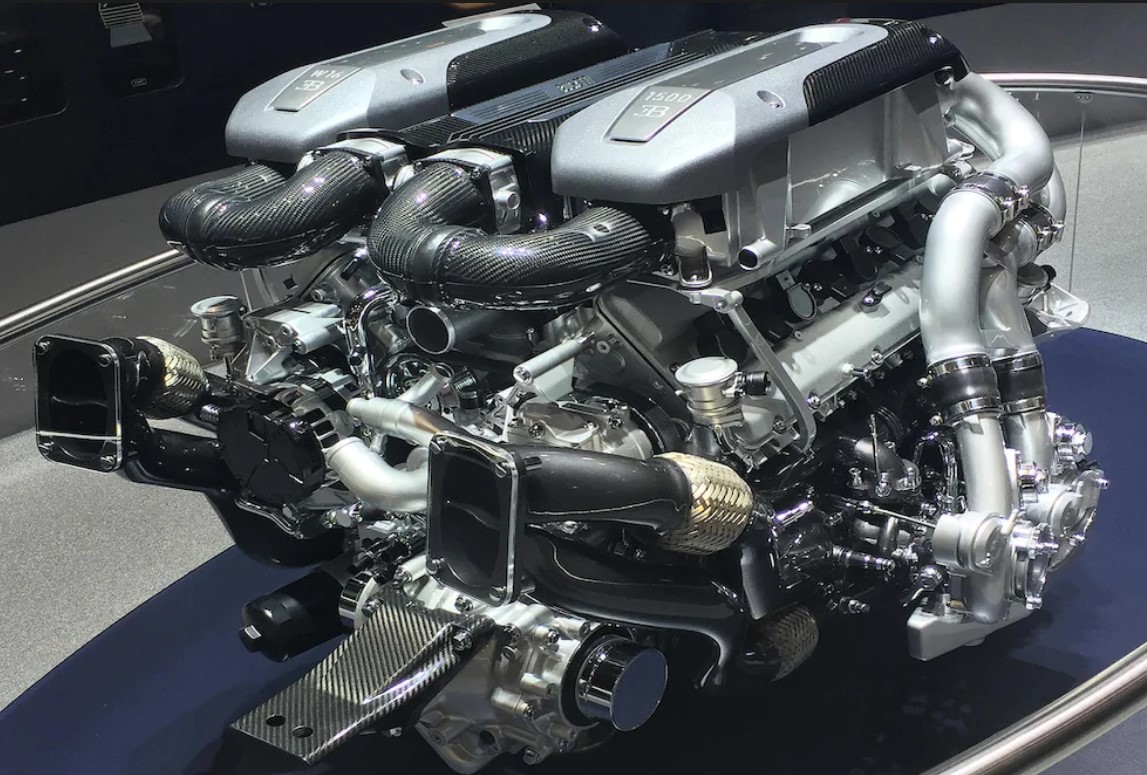A list like this is no easy task. What yardsticks would you use to identify the best engines? Do you consider horsepower? Reliability or popularity? In the end, we settled on a selection that, for various reasons, resonated the most because of how they are perceived and the impact they had on the automotive industry.
Chrysler 426 Hemi
Via Driving Line
The Chrysler Hemi was one of the major highlights of the American muscle car era. Chrysler first designed the Hemi (short for hemispherical combustion chamber) during World War II, where it found its way into the P-47 Thunderbolt fighter aircraft. As the name implied, the Hemi engine adopted a hemispherical shape, different from other 1950s-era engines.
The innovative design allowed for a more efficient combustion process and, by implication, more engine power. The 426 Hemi was a second-generation build produced between 1964 and 1971. It was initially intended for use in NASCAR racing and propelled the ’64 Plymouth muscle cars to a first-to-third place finish at the 1964 Daytona 500. A detuned 426 Hemi version, making around 425 hp, powered street cars in the early 1970s; cars like the Plymouth Hemi ‘Cuda, Plymouth Fury GT and Dodge Charger.
Small-block Chevy V8
Via Enginelabs
Few engines revolutionalized the American automotive industry like the legendary small-block Chevy V8. It had its debut almost seven decades ago, in 1955. Even then, the small-block engine boasted technology that directly influenced future V8 designs within General Motors and rival carmakers.
The first generation of Chevrolet small-block was a 265 cubic-inch (4.3L) V8 offered in the 1955 Corvette and Bel Air. The powerplant has constantly evolved over time and has powered everything from race cars, sedans and even pickups. The small-block Chevy V8 spawned the world-famous LS engine series, the beating heart of some of America’s most formidable sports cars.
Ferrari ‘Colombo’ V12
Via Drive-My
A significant proportion of Ferrari’s storied history is connected to one man, Gioacchino Colombo. He was the brain behind the longest-running engine design employed by Ferrari. The Ferrari Colombo V12 was a water-cooled power unit used to power Ferrari supercars in various forms between 1947 and 1988.
The powerplant was largely responsible for placing the prancing horse brand at the forefront of performance vehicles, particularly in the 1950s and 1960s. The first Colombo-designed V12 was fitted in the original 1947 Ferrari 125 S, displacing 1.5 litres and producing 116bhp at 6,800rpm. The engine capacity increased to 2.0 litres in the Ferrari 166 using a 60mm bore and the 58.8mm stroke measurement that remained in use until 1967.
Improvements to the V12 continued even after Colombo left Ferrari. The V12 was the preferred engine for some of Ferrari’s most iconic classics, including the Ferrari 250 GTO.
Lamborghini V12
Via Silodrome
One of the most enduring symbols of the Lamborghini brand is the V12 engine. It was the engine of choice in the 350 GT – Lamborghini’s first car – and has been reserved for the flagship models ever since. In its first guise, the Lambo V12 was a 3.5-litre unit with a twin-overhead cam that made an impressive 270 bhp, good enough to propel the 1964 350 GT to a 158 mph top speed.
Lamborghini stuck with the V12 formula through other models like the 400 GT, Espada, Islero and the Jarama. The V12 really hit its stride with the 1966 Miura. By this time, the power output had increased to 345 hp, enough to make the Miura the fastest production car when it debuted. The V12, with its unmistakable bellow, launched the modern age of the Lamborghini with the Diablo, Murcielago and eventually, the Aventador.
Toyota 2JZ
Via AutoEvolution
The incredible 2JZ is arguably one of the best engines that emerged from Asia. The 6-cylinder powerplant could deliver insane amounts of power with only a few modifications. It’s one of the reasons it became so popular among after-market tuners and enthusiasts; that and its reliability even when pushed to the limits.
The 2JZ was the driving force behind the infamous Toyota Supra MKIV, and reports of the Japanese sports car pushing 1,000 hp or more were not uncommon. Toyota engineers utilized a reinforced cast-iron block for the 2JZ’s construction. It remains one of the most heavily reinforced blocks ever produced – a fact that’s key to the engine’s vast power potential.
Nissan RB26
Via Dsportmag
Here’s another gem that turned the spotlight on the Asian performance car market in the late ’80s and ’90s. The RB26 is a straight-6, four-stroke gasoline engine initially produced from 1985 to 2004 (production resumed in 2019). The full name is RB26DETT, and believe it or not; there’s very deliberate reasoning behind the seemingly random selection of letters and numbers. ‘RB’ represented the engine series while ’26DETT’ stood for 2.6-litre (26) Duel Over Head Cam (D) Electric fuel injected (E) Twin Turbo.
The engine, which could rev all the way past 8,000 rpm, was officially rated at 276 hp though it made much more than that in the real world. Unsurprisingly, the RB26 was the engine of choice for Nissan’s most popular sports car, the Skyline GTR, from 1989 to 2002.
Both the 2JZ and the RB26 have earned more than a cult following. Together, they almost universally define “performance” when thinking of any vehicle from the late-80s to early-2000s Japan. When talking 2JZ vs RB26, it is impossible not to note the strengths of each while defending your platform of choice. These are engines that even brand “haters” will recognize and celebrate.
Porsche Flat-Six
Via Hemmings
The Porsche flat-six refers to generations of mechanically similar Boxer engines manufactured by the German carmaker and used for the iconic Porsche 911 sports cars since 1963. A flat-six engine is a six-cylinder piston engine with three cylinders on either side of a central crankshaft. The early flat-six engines were air-cooled. The first engine displaced 2.0-litres, but that has changed constantly over time, moving either upward or downward.
In 1999, the engine received its most dramatic update. Porsche swapped the air-cooled unit in favour of a water-cooled setup. Some Porsche sports cars today have turbochargers bolted onto the flat-six. In contrast, the naturally aspirated flat-six formula is still retained on examples like the Cayman GT4 RS, where it makes 493 hp. That’s a far cry from the 130 hp generated by the first-generation Porsche flat-six engine.
Volkswagen Air-cooled Flat-Four
Via Car and Driver
The Volkswagen Beetle ranks among the best-selling cars of all time. Over 21 million units were built from 1945 to 2003, and it was the Volkswagen flat-four engine that gave the vehicle its essence. The air-cooled engine was one of the most popular powerplants ever made, and variations of its design were used to power everything from boats and airplanes to power generators.
The flat-four was conceived just after the Depression-era, and the decision to use an air-cooled unit allowed Volkswagen to manufacture the engine inexpensively as the carmaker struggled for survival after the war. It was a move that ultimately paid off.
Honda F20C
There is no question that the Honda S2000 is one of the most exciting Asian sports cars ever. The lightweight handled like a dream and, at its heart, was one of the most incredible engines ever made. The Honda F20C, designed exclusively for the S2000, regularly punched above its weight.
The highly-tuned naturally aspirated 2.0-litre engine made a whopping 120 hp per litre and revved to an astonishing 9,000 rpm – that’s exclusive supercar territory. The Honda F20C turned the S2000 into a legend, one that’s still highly desirable as a collectible today.
Bugatti W16
Via Motortrend
The mighty W16 makes this list because of the ingenious engineering behind its construction and how it ‘triggered’ a horsepower war among marque carmakers. Volkswagen Group, seeking a suitable power source for the Veyron, is responsible for developing the W16 engine. The first iteration produced a whopping 1,001 hp. The setup has been tweaked multiple times since then, lending even greater horsepower and speed to other Bugatti models like the Chiron, Divo and most recently, the Bolide with 1,824 hp and 1,364 lb-ft of torque.
The W16 features 16 cylinders arranged in four banks in a unique W configuration – think of it as a combination of two V8 engines with a common crankshaft. A gang of four turbochargers are strapped to the engine, providing the boost that allows the engine to produce that much power.


